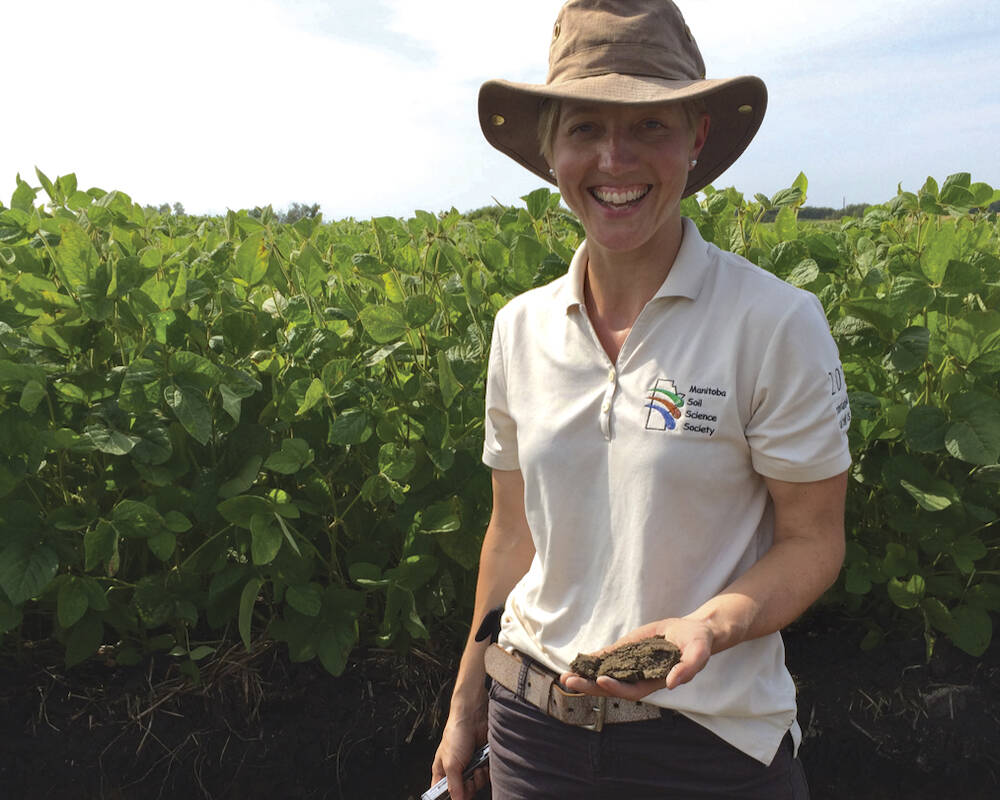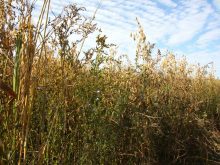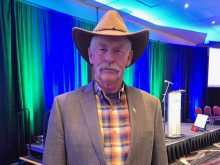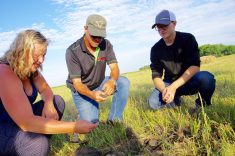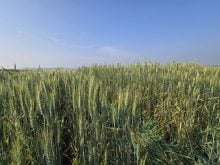Governments and government-led agencies need to do more to reduce the risk for farmers when it comes to adopting more sustainable farming practices, the head of a Manitoba pork producers group said during a recent virtual event.
Manitoba Pork general manager Cam Dahl said the best way for government to encourage farmers to adopt new technologies and approaches is to adopt a “carrot versus stick” approach and offer incentives or support rather than legislating them to make changes.
WHY IT MATTERS: Farmers from all sectors, from crops to livestock, are being pushed to up their game on environmental sustainability.
Read Also

Sizing up Port of Churchill expansion challenges
The Port of Churchill has some hurdles to clear before it can become the sea trade powerhouse for Manitoba and Canada that governments and the agricultural industry hope it will.
Dahl made his remarks at the 2025 Sustainability of Canadian Agriculture Conference co-hosted by the University of Manitoba’s National Centre for Livestock and the Environment and Agriculture and Agri-Food Canada (AAFC).
The three-day conference brought together researchers, producers, government and industry representatives to share ideas and experiences on how to improve agricultural sustainability in Canada.
“New technology and new approaches don’t always work as they’re expected. There is a risk in innovation,” Dahl said during a session focused on adopting best management practices and understanding producer decision-making. “New production practices may have unexpected consequences and unknown costs.”
That means expecting and requesting farmers adapt a new technology or management practice isn’t realistic unless these “adoption risks” are somehow mitigated through either markets or government intervention, Dahl said.
“If we’re looking to encourage farmers to adopt best management practices or sustainability practices at a faster rate, we have to look at how do we offset the risk of new technology and new practices for producers,” he said.

Dahl also said it is important the entire value chain is consulted when any new best management practices (BMPs) or approaches are rolled out. That includes producers, processors and retailers who will be financially impacted by any proposed changes. Doing so is integral to the development of successful sustainability efforts.
“It needs to happen throughout the development of best management practices and not just at the end,” he said.
That means there won’t be any surprises down the road, stakeholders will know what’s being discussed and nothing shocking will emerge from the other end of the process.
Dahl cited the Canadian Roundtable for Sustainable Beef and the Canadian Roundtable for Sustainable Crops as two programs that have done a good job of consulting producers, processors and retailers before introducing new BMPs.
Shawn Catherwood, a fifth generation farmer from Deylon, Sask. and CEO of Spur Line Crop Solutions consulting company, told the audience there are two questions producers should ask themselves before adopting any new on-farm practices: Who do you farm for and why do you farm for them?
“If you just dive into (making changes) headfirst with no real plan or belief in what you’re doing just because your neighbours are doing it or the agronomist you hired is telling you to do it, you’re setting yourself up for failure,” he said. “It’s about shifting that mindset before you can shift those management practices.”

Catherwood said his own farm began to shift away from conventional methodology to a more regenerative approach about five years ago.
A major reason for the shift was that even though gross revenues were rising, net revenues were continually declining due to soaring input costs. He also saw the soil on his farm was degrading which served as a wakeup call that something needed to change.
He said that meant a shift from the mindset of complaining about problems, but assuming nobody can actually do anything about them.
“I could not disagree more,” he said. “There’s actually a lot we can do about it and it’s all about taking back control.”
A few years ago he noted that much of the soil in his fields had a three to four inch layer of compaction. That prompted him to start looking at what kind of soil armour practices he could implement to improve soil quality. One of the first changes he made was to leave as much crop residue as possible in his fields to provide it with more post-harvest protection.
“We (now) put a lot of pride and effort into having as much residue as possible. Even if nothing’s growing, at least … we get some cover on the soil with that residue,” he said.
Catherwood also started using a variety of rotations and crop mixes to ensure carbon and nitrogen ratios are at optimal levels in his fields. He is also “leaning into” full-season cover crops and intercropping to boost disease suppression, fertility and nutrient cycling.
Those efforts will continue for the foreseeable future as he and his family seek ways to lower fertility costs since “growing plants is the ultimate tool and I’d rather spend money on seed than fertilizer.”
Tyler Fulton, who operates a mixed farm in western Manitoba and is a director with the Manitoba Beef Producers, said there are several factors he considers when determining whether or not to adopt a new management practice.
One of the most important is assessing the time management implications of the practice and whether it’s feasible to adopt it during the busy growing season. He mentioned the example of adopting Google Forms administrative software a few years ago to capture calving data. Not only did it provide real-time access to data, but it also reduced the number of errors associated with the old paper and pencil system he previously used. It also allowed him to focus more on core issues at calving time such as animal health.

Fulton said another critical factor when it comes to adopting new practices on his farm is the technological innovations they have to offer. He said any new tools such as a pasture map app he recently began using can help engage farmers and drive the adoption of new management practices.
With producers dealing with increasingly tight margins, Fulton noted that any shifts in management practices have to make economic sense. That means conducting a close comparison of the cost versus potential benefits.
“Quite simply, if you are dealing with tight margins … it’s harder to rationalize an investment into (something) that’s only going to pay off in the long run,” he said.
Fulton’s advice to producers who are considering adopting a new management practice is study both the short and long term benefits they could provide from.
“I think it’s important for everybody to consider all of these factors and maybe develop a score that takes a comprehensive view,” he said.
Producers can then make a priority list of things worth spending time and energy on.
Marla Riekman, a soil management specialist with Manitoba Agriculture, spoke about the importance of people in the scientific community building relationships with growers. That will help researchers understand the needs of farmers which in turn will help drive the adoption of new management practices.
“I can’t tell someone what their goalpost should be. That’s not my role,” she said.

